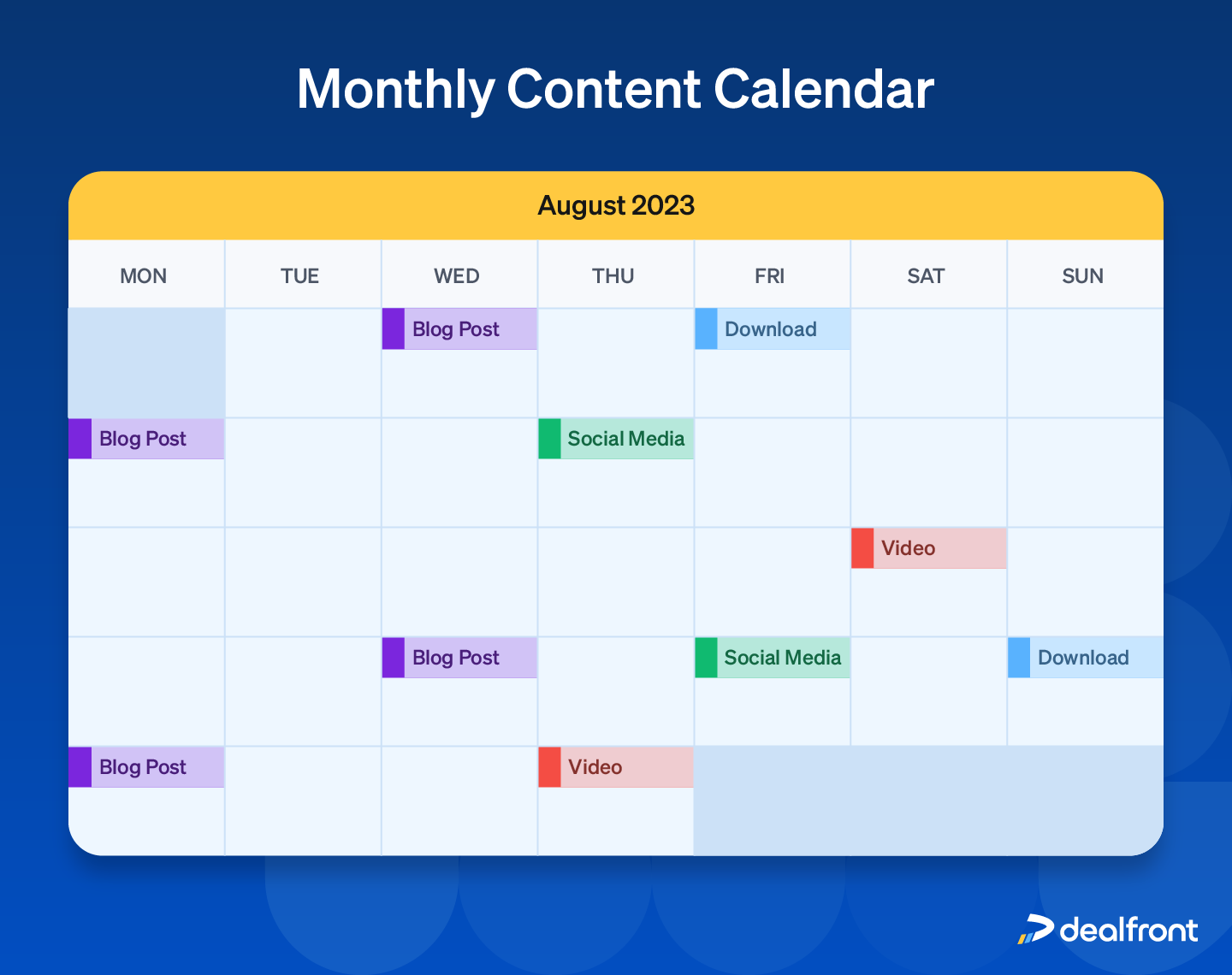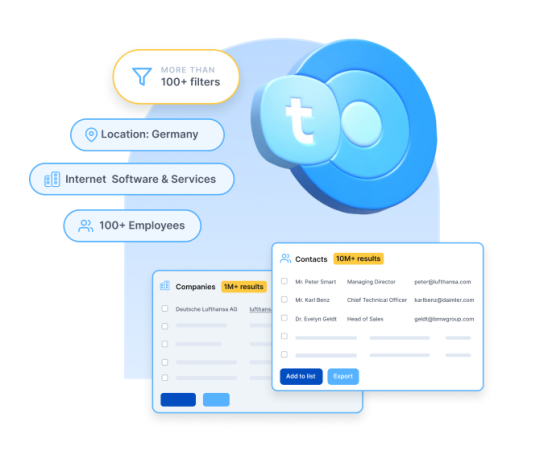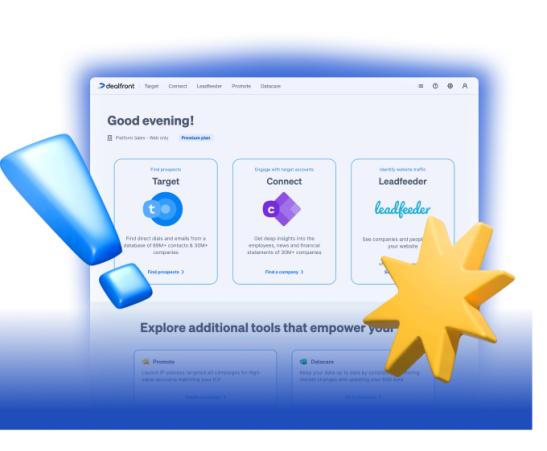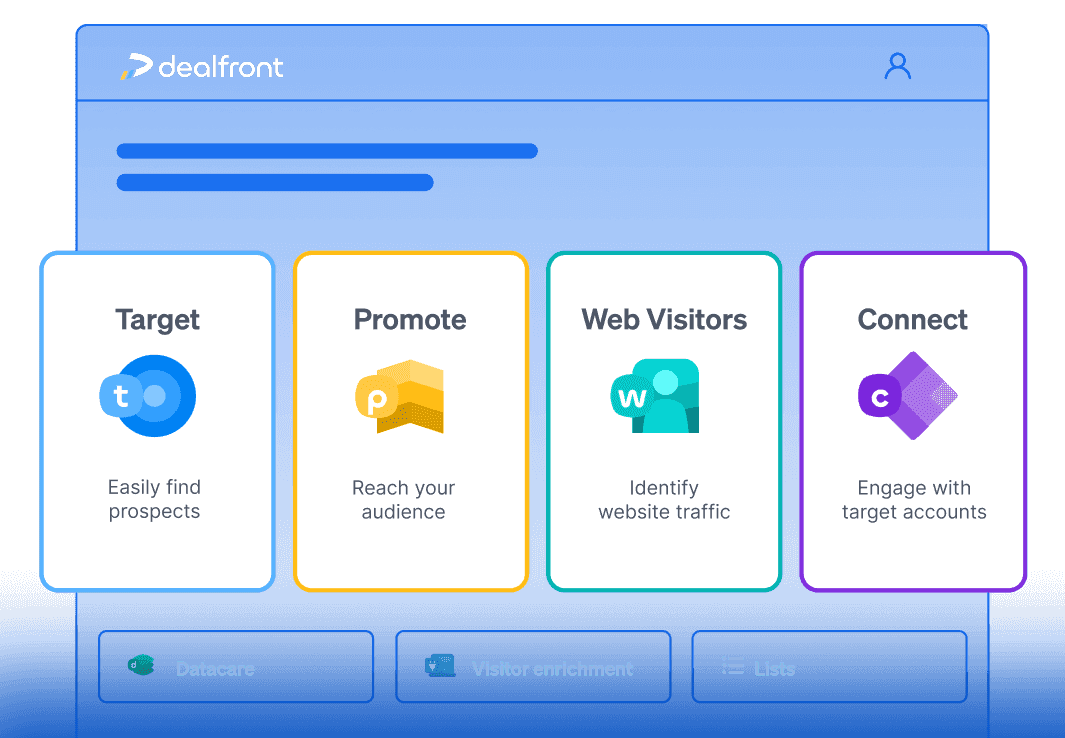If you don’t like ads, you’re not alone. Close to 800 million people use ad blockers. So, if you’re hoping to increase sales, you need a strategy that attracts and engages customers more effectively. Enter content marketing.
While traditional ads directly promote a product or service, content marketing aims to build trust and establish positive relationships first. That’s why 64% of the most successful B2B marketers have a content marketing strategy.
Content marketing isn't a one-time project. It is a long-term strategy that can help you establish authority in your industry, gain customer trust, and grow a successful business.
A lot of work is involved in crafting the right content marketing strategy. This article will cover everything you need to know to get started. Read on to learn how to create an effective strategy, how to measure its success, and ways to overcome common challenges along the way.
First, let’s start with the basics.
What is content marketing?
Content marketing is a strategy used by businesses to reach their target audience using:
Articles
Blog posts
Videos
Infographics
Podcasts
Social media posts
Each type of content serves different purposes and appeals to different audience preferences. But the bottom line is that it should offer something valuable. It could be information, entertainment, inspiration, or solutions to your audience's problems.

This content is distributed through websites, social media, and email newsletters. But first, you must understand the interests, needs, and preferences of the specific group of people for whom the content is intended.
As a B2B company, your audience is typically smaller and more specialized than B2Cs, often consisting of decision-makers and stakeholders within other companies.
That’s why B2B content often delves deep into niche industries and topics. It may involve technical terminology and industry-specific knowledge that requires a deep understanding of the target audience's needs. Because B2B content tends to address technical topics and use cases, whitepapers, case studies, webinars, and industry reports are great ways to engage with potential customers.
Consumers typically have less time and patience for lengthy, technical information. That’s why B2C content often relies on clear, concise, and easily digestible messaging. B2C audiences expect more frequent updates and fresh content compared to B2B. However, both B2C and B2B content marketing rely on compelling storytelling to keep their audiences engaged.
A lot of resources go into creating content, regardless of the target audience. You have to invest time and money to find creative professionals who understand your offerings and your target audience. Plus, your team needs to have the right mix of creative and technical skills to produce content that resonates with your target audience.
But the benefits of a well-executed content marketing strategy are well worth the investment.
Benefits of content marketing
Because you’re addressing a sophisticated audience that keeps close tabs on industry developments, content marketing is an absolute necessity in the B2B environment. That’s why 81% of B2B-oriented companies rely on content marketing to drive product awareness, establish their market presence, and generate quality leads.
Driving brand awareness
Content marketing is how you can introduce your brand to potential customers. But to facilitate that introduction, you need to draw potential customers in with useful and engaging content. Your company’s unique brand identity and the industry you operate in will help guide you to the right tone and voice to use in your marketing content. For example, some brands have great success with a playful and casual tone, while others see better engagement when they use a more professional tone.
But, no matter what industry you’re in, content that is up-to-date, relevant to your industry or niche, and thoroughly fact-checked will establish your business as an authoritative and trustworthy source of information. Content that provides a new or unique approach to solving a problem will also help get your brand noticed by new potential customers.
Trustworthy and helpful content can forge a strong connection between your business and its audience. It also increases the likelihood of brand recall. And since people want to share content they find interesting, you can count on your existing audience to refer others to your channels, expanding your brand's influence.
Establishing authority
Content creation and curation offer you a platform to demonstrate in-depth knowledge and expertise in a particular field. It also helps establish your brand as a trusted source of information, which keeps existing customers engaged and attracts new customers who are looking for a solution you offer.
Consider a company specializing in advanced computer software. They can show how good they are at maximizing the software's potential by producing instructional videos. Anyone who engages with this content will get the impression that the company knows all about the industry and users' needs.
As a result, when people require advice or insights about that specific domain, they instinctively turn to the company for guidance. They may even share the company's content within their professional circles, attesting to its expertise. This process gradually cultivates a reputation for the company as an authoritative and reliable source of information. And that authority leads to more engagement and more opportunities to show your audience why they need your product or service.
Lead generation
Content marketing isn't just about showcasing expertise. It's also a powerful tool for lead generation and nurturing. It helps potential customers discover your company's content through search engines or sharing platforms like social media. While social media follows can be valuable, B2B companies often generate leads by offering gated content.
Gated content requires a user to provide some kind of contact information — usually an email address — to receive the content they want. For example, if a user wants to read a whitepaper your business has published, they provide their name and email in a contact form that automatically sends the whitepaper to them when submitted. The collected contacts are then passed on to the sales department for nurturing.
Now, let’s create a content marketing strategy that generates the desired results.
Content marketing strategy
An effective content marketing strategy is based on four essential aspects. First, you must set your goals, establish which message you want to convey, and how to do it. Next, you study and understand your audience's demographics, interests, and pain points.
After that, you need to brainstorm content ideas and figure out how to deliver those ideas to your audience. Finally, you have to decide which distribution channels will let you best reach your audience.
Visualizing your marketing funnel
Before you even start brainstorming content topics, your content marketing team needs to know what types of content are best suited for each part of your customer’s journey. Luckily, there’s a concept that makes that task easier: the marketing funnel.
Imagine a kitchen funnel with the widest part at the top. At the top of the funnel, awareness is the goal, and content needs to be designed to grab a lot of attention while providing value. This is where social media posts, informative articles and blog posts come in.

The middle of the funnel is called the consideration phase. During this phase, the content needs to focus on educating potential customers and nurturing them as a lead. At this point, case studies, webinars or in-depth guides will come in handy. Any content that helps your leads understand the benefits of your offering is what you should focus on here.
As customers move towards the bottom of the funnel, they are moving closer to making a decision to buy or move on. Here, content should aim to convert them into actual customers. This is where you use content that highlights product demos and special offers. With this in mind, you now have an idea of how to create a content strategy that’s focused on generating results.
Crafting your content marketing strategy
A marketing plan serves as a roadmap, providing clear direction and purpose for all your content creation and distribution efforts. A detailed strategy will help you keep your messaging and brand identity consistent, enhancing credibility and further bolstering your brand identity. A clear strategy with well-defined goals will also help you make more informed decisions because it will be easier to measure the effectiveness of your marketing efforts.
To get started, create a content marketing plan. Here’s what your plan should have:
Setting goals and objectives
Defining target audience
Brainstorming content types and formats
Creating a content calendar
Establishing distribution channels
Keyword research and SEO content marketing strategy
Define metrics and key performance indicators (KPIs)
Allocate budget and resources
Outline strategies for content promotion
Adopt mechanisms for feedback
Establish roles for content governance and workflow
Ensure compliance with regulations
It’s important to remember that there’s no one-size-fits-all content marketing strategy. You should tailor your plan to your resources, strengths, and target audience. For example, if members of your target audience love short blog articles and don’t spend much time watching videos, you should focus your efforts on publishing engaging blog posts. To get you acquainted with the process, let’s look at some of the crucial steps.
Identifying your audience
Before creating marketing content, know who you’re targeting. When you have that, you have your buyer persona. This is a semi-fictional representation of your ideal customer. Their identity is based on market research and real data about your existing customers.
To create a buyer persona, describe them using demographic information, behaviors, goals, pain points, and other characteristics specific to your offering. For example, your buyer persona might be the Marketing Manager at a mid-to-large-size software company who wants new leads to the pipeline. Using a data-driven tool can help you get this done.

One such tool is Target, a prospecting tool that offers unique filtering options to target companies that fit your buyer persona.
Depending on the nature of your business, you may have multiple types of customers with varying needs. Create separate personas for each segment to ensure a tailored approach.

A search for a Marketing Manager in Dealfront’s Target following the buyer persona
Understand the problems your customers face so that you can position your products or services as solutions to their pain points. It is also a good idea to involve sales, customer support, and product development teams when you’re creating and implementing buyer personas. This ensures alignment and a holistic understanding of your audience.
Types of B2B content
Once you have a clear idea of who your customer is, deciding which type of content to use is easier.
Here's a breakdown of standard B2B content formats and how to select the right one for different goals:
Blog posts: Use blog posts for informative and evergreen content. Blog posts are a solid choice if you want to establish thought leadership or answer common industry questions.
Whitepapers and eBooks: These are the ideal lead magnets for comprehensive research, analysis, and insights. Use them when you have valuable data or in-depth knowledge to share and want to capture leads through gated content.
Case studies: When you want to provide evidence of your solutions' effectiveness, use case studies. Highlight specific customer experiences and outcomes.
Infographics: Opt for infographics when you have data, statistics, or processes that can be presented visually. They are great for social media and quick consumption.
Videos: Videos are versatile and can be used for product demonstrations, tutorials, customer testimonials, or brand storytelling. They are effective for engaging and educating your audience.
Product demos and tutorials: These are essential for showcasing the practical benefits of your products or services. Use them when you need to educate users on using your offerings effectively.
Now that you know what kind of content to create, the next hurdle is understanding which channels work best for each type.
Distribution channels in B2B
Choosing the right platforms for distribution directly impacts who sees your content and how it resonates with them. Each platform has a distinct user base, culture, trends, and format. Different channels might also let you engage with people at different points of the marketing funnel.
Sometimes, the type of content you want to share will determine which channels you use for distribution. For example, different social media platforms have different user bases. For instance, LinkedIn is often preferred for B2B networking and thought leadership, while X (formerly known as Twitter) may be more suitable for quick updates and conversations.
Email newsletters are suitable for regular communication, product announcements, and delivering curated content to subscribers who have already engaged with your brand. You can even segment your email list to tailor content to specific audiences. One important thing you should not miss is how to tell whether your content generates the desired outcome.
Measuring your content marketing success
The only way to tell whether you have an effective strategy is by analyzing performance data. Measuring the success of your strategy provides valuable insights into audience engagement, lead generation, ROI, and other metrics. This data will help you make informed decisions about your next steps. Tracking performance can also help you adapt strategies to changing market dynamics.
Key metrics
Leverage data and analytics to measure the effectiveness of your content marketing efforts. Start by tracking key performance indicators (KPIs) like conversion rates, customer acquisition costs, and lifetime value. Analyze this data to understand which content initiatives directly impact your business's bottom line and adjust strategies accordingly.
Content marketing return on investment (ROI)
Measuring the ROI involves assessing the financial outcomes generated by your content against the costs of creating and promoting that content. Here's a simplified formula:
ROI (as a percentage) = (Net Profit from Content Marketing / Cost of Content Marketing) x 100
To measure ROI, follow these steps:
Calculate all content creation, distribution, and promotion expenses, including salaries, software, advertising, and other relevant costs.
Identify KPIs that align with your goals, such as website traffic, conversion rates, customer acquisition costs, and lifetime value.
Calculate your net profit by subtracting the total costs from the revenue or value generated by your content marketing efforts.
Let’s consider one example. A B2B software company creates an eBook addressing common pain points in its industry. They promote it through targeted social media ads and email campaigns. As a result, they generated 500 new leads for $2,000. After nurturing these leads, 10% convert into paying customers, bringing in $50,000 in revenue.
The ROI for this campaign would be calculated as follows:
(($50,000 - $2,000) / $2,000) x 100 = 2,400%.
But if your business is to enjoy high ROI, you must know how to navigate common pitfalls.
Overcoming common challenges
When B2B marketers create and share content, they are not looking to attract just anyone. They want their content to resonate with qualified prospects. But sometimes, the opposite happens, and a campaign fails to attract quality leads. As a result, the ROI falls short of expectations.
Marketers can also struggle to generate content ideas. Even when they think they’ve figured out the best topics, there’s always the possibility of not generating enough traffic.
These are just some of the challenges of content marketing. And to solve them, you need a data-driven approach. Let’s look at how you can go about it.
Addressing budget limitations
If you’re not getting the expected ROI from your content marketing strategy, it could be due to inadequate or misallocated resources. But the only way to know what’s happening is to use analytics tools to measure how your content is performing.
Monitor metrics like engagement rates, lead generation, and conversion rates. These insights can help you understand which content formats resonate best with your audience.
Once you break your data down, you can prioritize content types that provide the highest ROI. For instance, if you find more traffic coming from video content than blog posts, you can reduce your blog output and spend more resources on videos.
Leveraging user-generated content is another way to use a limited budget more efficiently. Encourage satisfied customers to share their success stories or testimonials. You can even re-share their content on your own channels or comment on user-created content.
Content creation challenges
If you struggle with consistency, establish a content calendar with well-defined topics and deadlines. It will help you plan and organize your workflow, ensuring you have enough time to conduct thorough research and produce polished pieces.

If you can’t afford to post regularly, prioritize evergreen content that stays relevant for a long time to make the best use of your budget. Content curation — which involves sharing content someone else produced that relates to your business’s offerings or industry — is another way to make the most of your content marketing budget. For example, you might create and share a blog post with the ten best free beginner’s guides for using a type of software your company offers.
Outsourcing can also be a valuable solution for maintaining a steady flow of quality content. Collaborating with skilled creators can provide fresh perspectives and expertise, allowing you to tap into a wider talent pool. However, it's essential to provide clear guidelines and feedback to ensure that outsourced content aligns with your brand's voice.
Aligning with organizational goals
To achieve a goal, you need to set it first. That’s why you need to have a crystal-clear understanding of your company's overall objectives. These could be anything from increasing revenue, expanding market share, or improving customer retention. Then, translate these objectives into specific content marketing goals. For example, generating leads, increasing website traffic, or boosting engagement on social media.
Start winning with the right content marketing strategy
Now, you know the basics of how to succeed at content marketing. It’s important to remember that every business is different, so what works for your competitors might not work for you. Successful businesses take time to understand how to stand out from competitors and how to reach their potential customers.
Focus on the content and distribution platforms where your target audience is most active. This way, your content reaches the right people at the right time. While you can use evergreen content, content curation, and outsourcing to help you make the most of your marketing budget, you should have a clear idea of your audience and your company’s goals before you start commissioning content.
Whether your company is creating its first marketing strategy or is well on its way to being a respected thought leader, prioritizing data collection will help you generate quality leads and grow your business.








